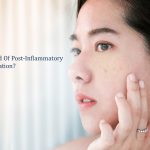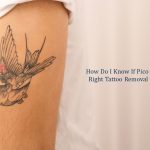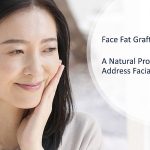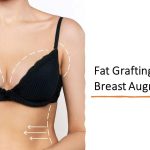Acne, a common skin condition, can leave behind various types of scars, each presenting unique challenges for those seeking clear and smooth skin. Among these scars, keloid acne scars stand out for their distinctive characteristics.
In this article, we discuss acne scars, with a focus on keloids. Understanding their unique characteristics and exploring the types of acne scar treatments available in Singapore. This knowledge is especially important for those seeking to address these scars and improve their skin’s appearance.
What Are Keloid Acne Scars?
Keloid acne scars are raised, enlarged scars that are pink, red, or skin-colored, and usually darker than the outer skin. These scars can form due to minor skin injuries, such as an acne lesion and expand beyond the original location of skin damage. Although they can develop in anyone, they are more prevalent in those with a darker complexion, such as Africans, African-Caribbean, and South Indian populations.
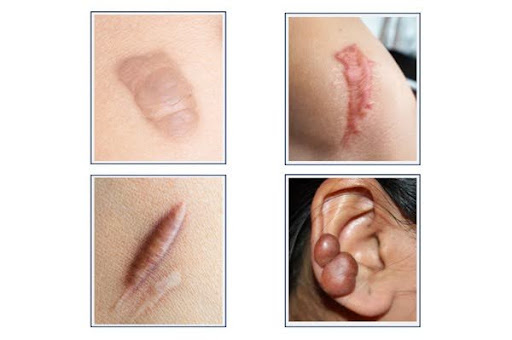
These scars usually form due to an accumulation of collagen and scar tissue during healing, and are most common in the ears, chest, shoulders, and upper arms. The appearance of keloid acne scars can be unsightly, and it can also cause discomfort and irritation. They can appear months to a year after an injury and typically do not resolve without treatment.
While a keloid acne scar is not harmful to your health, it can lead to emotional distress. Early detection and treatment are crucial. If you are uncomfortable with how a keloid scar looks or feels, talk to your doctor about having it flattened or removed.
What Causes Keloid Acne Scars?
Keloid acne scars usually occur due to an excess production of collagen during the skin’s healing process following severe acne inflammation. Collagen, a protein present all through the body, helps in wound healing, but keloid acne scars can form when the body makes too much collagen.
Injections, body piercings, burning, hair removal, and even minor scrapes and bruises are all possible causes of keloids. They may develop for no apparent cause too. Keloids are neither contagious nor malignant.
Keloid scars may have a hereditary component, which indicates that if one or both of your parents have them, you are more likely to have them. According to one research, the AHNAK gene may be responsible for determining who gets keloid acne scars and who does not. Researchers discovered that persons who carry the AHNAK gene are more susceptible.
Keloid acne scars affect around 10% of the population. They are more common among people with darker skin tones and can affect both men and women equally.
You are more prone to get keloid acne scars if you:
- Have previously had a keloid formation
- Have darker skin – African, Asian, and Hispanic individuals are 15% more prone to develop keloid acne scars
- Have had mesh skin grafts, which is a form of surgery used to transplant a portion of healthy skin from one place of the body to another
How to Identify Keloid Acne Scars
Keloid acne scars are typically bigger than the original wound, thick or lumpy, and rise above the surrounding skin.
Keloid acne scars can be:
- Raised and hyperpigmented
- Pink, red, or purple
- Gradually expanding
- Pale and bouncy
- Itchy and painful
They may also have:
- A shining appearance
- A lack of hair on the scar
- A firm and rubbery feel to the scar
- The red or purple colour that transforms to a brown or pale colour
- A dome-like or asymmetrical shape
When a surgical cut or injury causes keloid formation, the keloid scar tissue may continue to grow after the wound has healed. It may become larger and more noticeable until it reaches its full size.
Keloid vs Hypertrophic Scars

1. Size
The size of a keloid scar can range from less than an inch to 12 inches or above. Hypertrophic scars are often smaller in size than keloid scars.
2. Colour
Keloid is a raised, enlarged scar that can be pink, red, skin-coloured, or darker than the outer skin. Hypertrophic scars are often pink, crimson, or purple.
3. Causes
Any type of skin injury can cause keloid development. Keloid scars are produced by excessive collagen formation. Hypertrophic scars often develop 4 to 8 weeks after a wound infection, wound closure with excessive tension, or other severe skin damage.
4. Growth
A hypertrophic scar grows inside the borders of the cut, but a keloid scar grows beyond the cut line itself.
5. Areas of Emergence
Keloid scars are most prevalent on the upper chest, shoulders, head (particularly the earlobes after piercing), and neck, although they can appear everywhere. Hypertrophic scars are more prevalent in the back, chest, shoulders, upper arms, elbows, and other joints.
Are Keloid Acne Scars Avoidable?
Although keloids cannot be avoided, it is crucial to try to avoid skin injuries that may result in them. After an injury, applying pressure pads or silicone gel pads may help avoid keloids. Sunlight or tanning may discolour the scar tissue, making it darker than the surrounding skin. This might make the keloid more visible. To avoid discolouration, keep the scar protected when out in the sun.
Keep the wound clean and moist. Wash the affected area gently with water and mild soap. Apply a thin coating of petrolatum jelly or other ointments to the affected area. Reapply the ointment as needed throughout the day.
Adults must take these precautions for six months following a skin injury, and children for up to 18 months to avoid keloid scars.
Can I Flatten Keloid Acne Scars With Home Remedies?
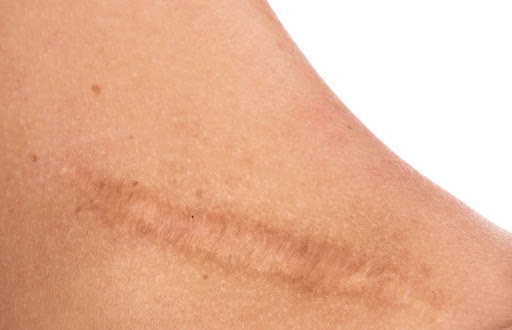
Keloids usually do not require treatment. It’s unlikely that you can effectively flatten keloid acne scars with home remedies alone. While some home remedies may offer temporary relief or slight improvement in appearance, keloid scars typically require professional treatment for significant reduction or flattening. Although there are no proven methods of removing keloid scars naturally. But, there are some studies that suggest using a few over-the-counter treatments and home remedies for keloids may be helpful.
1. Silicone Gel
Silicone gel helps with keloid scars because it creates a protective barrier over the scar, keeping it hydrated and preventing excessive collagen production. This may lead to softening of the scar tissue over time, reducing its appearance. Additionally, the silicone gel may help improve the texture and colour of the scar, making it less noticeable.
2. Retinoid Cream
Retinoid creams aid in keloid scars by regulating skin cell turnover and collagen production, leading to reduced scar thickness and improved skin texture. Follow the instructions on the retinoid cream product label.
There is limited scientific evidence to support the effectiveness of garlic, honey, and onion extract specifically in improving keloid scars. While some studies suggest that these natural remedies may have potential benefits for wound healing and scar reduction due to their antibacterial and anti-inflammatory properties, more research is needed to confirm their efficacy specifically for keloid scars. It’s always best to consult with a healthcare professional for appropriate treatment options for keloid scars.
3. Garlic
While garlic contains compounds that inhibit enzymes responsible for tissue and pigment accumulation, its effectiveness in reducing keloids is not conclusively proven. To use garlic for keloids, crush two to three fresh garlic cloves, apply to the affected area for 15 minutes, then wash with water and moisturise. If irritation occurs, discontinue use or reduce application time. However, it’s essential to note that individual responses may vary, and consulting a healthcare professional is recommended before using garlic for keloids.
4. Honey
While honey does have anti-inflammatory properties, its effectiveness specifically for reducing keloid scars is not scientifically proven. However, some people may find it beneficial as a natural alternative to corticosteroids or nonsteroidal anti-inflammatory drugs (NSAIDs). To use honey for keloids, apply a small amount of raw honey to the area and allow it to settle. If the area becomes sticky, rinse it afterwards. It can be applied as frequently as necessary, at least two to three times each day, until desired results are achieved. As with any home remedy, individual responses may vary, and consulting a healthcare professional is recommended before using honey for keloids.
5. Onion Extract
Onion extract may hinder the entry of fibroblasts, the cells responsible for scar tissue formation, into the skin, thus reducing pigmentation. This is likely due to the presence of quercetin, an antioxidant flavonol found in onions. To apply, cut a small onion into pieces, extract the juice with a clean towel, and apply it to keloid acne scars. Allow it to dry before rinsing off. Repeat this process multiple times daily. While onion extract holds promise, its effectiveness specifically for keloid scars may vary, and it’s advisable to consult a healthcare professional before use.
6. Centella Asiatica
Centella Asiatica, known as Gotu Kola, has been acknowledged for its benefits in wound healing, including infected wounds, burns, and keloid scars. Madecassoside, a compound found in Centella Asiatica, has unique pharmacological effects that aid in wound healing and diminish keloid formation. This is often administered in cream form directly onto the scars for its healing properties. The efficacy of Centella Asiatica in treating keloid scars may vary among individuals, so it’s important to consult a healthcare professional before using it.
Clinical Treatments to Get Rid of Keloid Acne Scars
Keloid acne scars can be challenging to treat effectively. Hence, doctors usually personalise acne scar treatment to individuals depending on characteristics such as age and keloid type. Keloids are difficult to remove entirely, and combining treatments often yields better outcomes. As a result, doctors frequently suggest two or more forms of treatment to their patients.
1. Steroid Injections
Steroid injections typically involve the administration of corticosteroids by the doctor directly into the scar to break down scar tissue.
Steroid injections reduce inflammation by decreasing the production of collagen and other proteins responsible for forming fibrous scar tissue.
As a result, keloids soften and become flatter, reducing their appearance. Multiple injections may be necessary to restore a smooth and even texture to the skin.
2. CO2 Laser Therapy
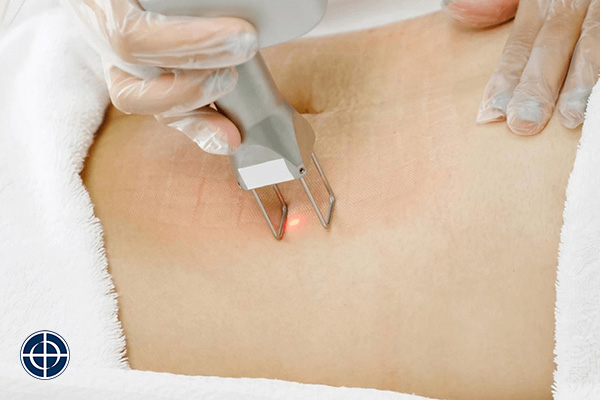
To reduce discolouration and redness in mature keloids, the doctor may offer CO2 laser therapy. This laser treatment method is also utilised to improve uneven skin tone produced by keloids and to reduce the visibility of stretch marks.
3. Pulsed Dye Laser Therapy
This laser treatment in Singapore is used to decrease scar redness and discolouration by targeting the scarred regions with a highly focused beam of light. Laser therapy may be painful for some people, but a topical anaesthetic cream can be used to alleviate the discomfort. Based on the severity of your condition, your doctor will advise you about the number of sessions you will need.
4. Cryotherapy
Cryotherapy is another treatment option method used to treat keloids, which involves freezing the scar tissue with liquid nitrogen or a similar freezing substance. This freezing process can help to reduce the size and thickness of the keloid by destroying the excess scar tissue.
This approach is frequently used before or after corticosteroid injections to assist increase the effectiveness of the injections.
Multiple cryotherapy sessions may be necessary to achieve the desired results, and the procedure may cause temporary discomfort or pain. It’s important to consult with a doctor to determine if cryotherapy is suitable for treating your keloid scars.
Finding the Appropriate Solution for Treating Keloid Acne Scars
If standard over-the-counter treatments don’t work well in diminishing your scars, it is advisable to seek professional advice from a doctor regarding alternative acne scar treatments. These may encompass interventions such as steroid injections, laser therapy, including pico laser for acne scars, and cryotherapy. Achieving the permanent removal of keloid scars may require a combination of these treatments.
The doctors at Dream Plastic Surgery will be able to advise you on the most appropriate treatment combinations.


